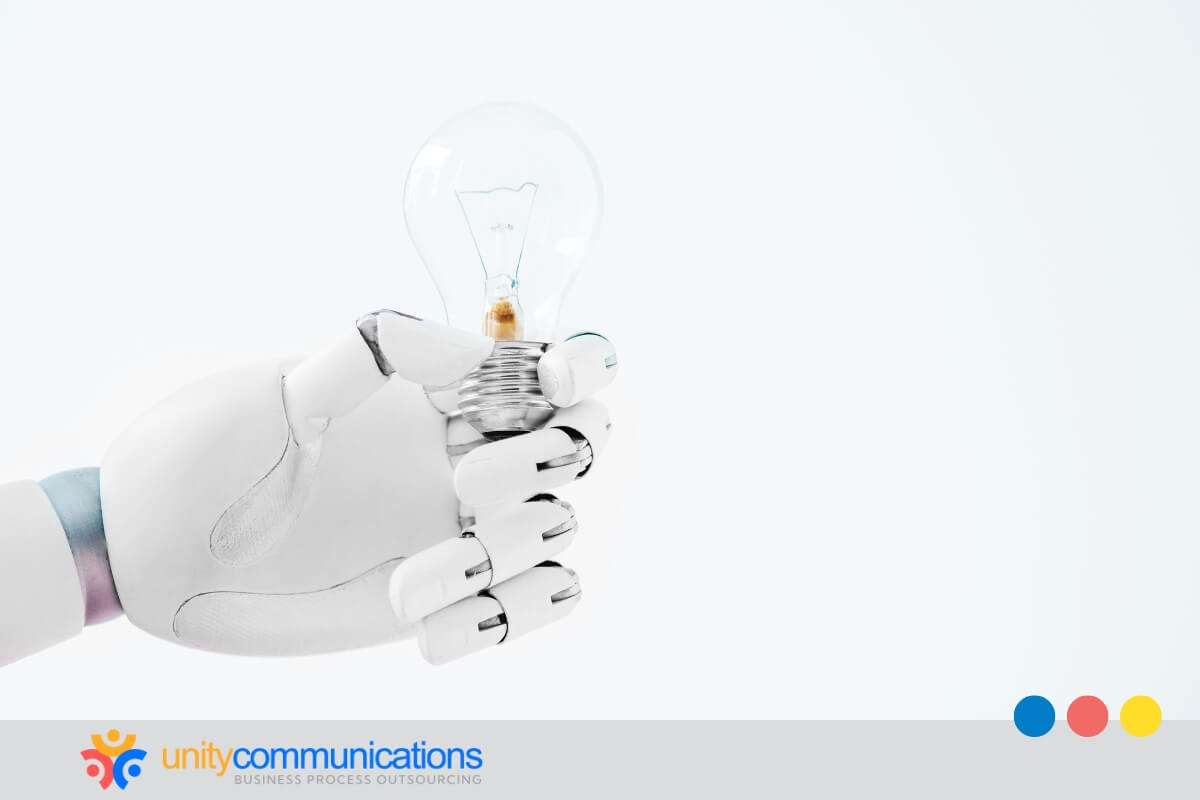Table of Contents
If you’ve been watching AI evolve in 2025, you’ve probably noticed that autonomous AI agents are no longer experimental. They’re becoming reliable partners in day-to-day work. From automating research to building apps to writing entire strategies, these tools are changing how businesses and individuals get work done.
With so many contenders on the market, the challenge isn’t whether they work. It’s what delivers the right mix of performance, features, and value.
In this guide, we’ll walk through the most talked-about names from the ever-growing list of autonomous AI agents, explain what makes each one stand out, and help you decide which to try first.
What are autonomous AI agents?

Autonomous AI agents are not just chatbots. They’re systems designed to plan, act, and adapt. Instead of relying on step-by-step commands, you give them a goal, and they handle the execution.
This is what separates them from standard AI assistants. They combine reasoning, memory, and tool integration to complete tasks independently.
In fact, many professionals who ask what autonomous AI is can think of it as the next stage of intelligent systems: tools that don’t just respond but actually take initiative to achieve outcomes. At their core, these agents:
- Simulate human-like workflows.
- Research competitors, draft proposals, analyze data, and build software.
- Loop through tasks, self-correct, and continue until it achieves its goal.
- Free teams from repetitive tasks and unlock creative capacity.
- Allow humans to focus on higher-value work.
With these benefits, their adoption as trustworthy tools for marketing teams, HR managers, lawyers, and executives is also becoming mainstream. According to Gartner, at least 15% of day-to-day work decisions will be made autonomously through agentic AI by 2025. This highlights just how central these tools will become in everyday business operations.
However, the list of autonomous AI agents is incredibly diverse. Some focus on lightweight personal productivity, while others target enterprise-scale deployments. Some are open-source, community-driven projects, and others are polished commercial platforms.
This variety makes it critical to understand which one fits your needs before diving in. If you learn how to partner with these systems effectively, they can amplify your productivity without compromising control.
2025 list of autonomous AI agents, ranked
The market is crowded and fast-moving, so this list focuses on agents that teams can actually use today and not just lab demos.
We looked for tools that deliver tangible outcomes (time saved, quality improved) across common business workflows such as research, content operations, customer support, and light engineering.
The goal is to help you pick the best-fit agent for your use case, budget, and risk profile.
1. AutoGPT: The pioneer that started the movement
AutoGPT takes the first spot in this ranking. Although it had flaws, it was the pioneer. It was the first AI agent to go viral, capturing global attention in 2023 and sparking the wave of innovation we now see in 2025.
While other tools have surpassed it in polish and enterprise readiness, AutoGPT remains the benchmark for any serious list of autonomous AI agents.
Features
- Multi-step task execution with minimal human input
- Goal-setting and dynamic task-chaining capabilities
- Ability to connect to external APIs and perform web actions
- Open-source ecosystem with strong community contributions
The value of AutoGPT lies in its versatility and legacy. It might not be the smoothest to deploy, but it’s the clearest example of AI autonomy in action. Many businesses still use it as an experimental platform to prototype automation ideas before moving on to more stable solutions.
Practical use cases include running competitor research, drafting long-form reports, and simulating strategic workflows. AutoGPT excels when you want to push the boundaries of what autonomy can achieve, even if it sometimes requires extra oversight.
Compared to other autonomous AI agents in the list, AutoGPT has fewer guardrails but more freedom. That makes it exciting for innovation but risky for production workflows. Think of it as the wild frontier of autonomy—robust but unpredictable.
If you’re new to AI agents, AutoGPT gives you the rawest look at what’s possible. It’s a must-try, even if you later migrate to tools such as SuperAGI or LangChain, for scale. Its pioneering status alone secures its place on this ranking.
2. BabyAGI: Lightweight and task-driven
BabyAGI ranks highly because of its simplicity. Where AutoGPT sometimes feels overwhelming, BabyAGI focuses on task generation, prioritization, and execution. This streamlined design makes it a standout among our list of autonomous AI agents, particularly for professionals seeking clarity without complexity.
Features
- Task creation, ranking, and completion in continuous loops
- Lightweight architecture for fast deployment
- Lower computing requirements compared to AutoGPT
- Flexible customization for small teams and startups
The value of BabyAGI lies in its efficiency. It doesn’t try to be everything; it tries to be reliable. That’s why many entrepreneurs and freelancers turn to it when they want an AI partner that behaves more like a disciplined project manager.
Use cases often include managing research pipelines, tracking leads, or automating to-do lists. For users who don’t have time to constantly monitor agents, BabyAGI’s task-first focus delivers real peace of mind.
Compared to others in the list, BabyAGI prioritizes function over flash. It cannot simulate debates like CAMEL AI or build apps like GPT Engineer, but it can help you stay organized and progress.
If you value reliability over experimentation, BabyAGI’s ranking reflects its strength: keeping you on track with minimal fuss. It’s one of the most practical autonomous AI agents available in 2025.
3. AgentGPT: Your browser-based companion
AgentGPT earns its rank by lowering barriers. Unlike Auto-GPT or BabyAGI, which require setup, AgentGPT runs directly in your browser. This accessibility is why it consistently appears in every modern list of autonomous AI agents.
Features
- Browser-based interface with zero installation required
- Real-time task planning and execution
- Customizable agents for marketing, research, and more
- Expanding library of community-driven templates
The value of AgentGPT is speed. It allows you to spin up agents instantly without requiring coding or complex setups. For individuals, educators, and small teams, that convenience is hard to beat. You can experiment with autonomy in minutes rather than hours.
Daily use cases include drafting articles, running market scans, or simulating digital assistants. Because it’s browser-based, it’s also a popular choice for demonstrating autonomy to executives or colleagues who are curious but cautious.
Compared to the heavier tools in the list, AgentGPT is limited in depth. It won’t handle complex enterprise workflows, but that’s not its job. It’s a playground for fast learning and quick wins.
If you want a gentle introduction to agents, or a tool for light experimentation, AgentGPT’s ranking reflects its strength: making autonomy approachable for everyone.
4. SuperAGI: Enterprise-focused autonomy
SuperAGI ranks near the top of this year’s comparison because it is one of the first projects designed explicitly with enterprise needs in mind. While many agents started as open-source experiments, SuperAGI’s architecture emphasizes control, reliability, and integration at scale. That makes it a serious contender for companies beyond “sandbox testing” and now want autonomous AI as a dependable part of their operations.
For any executive reviewing a list of autonomous AI agents, SuperAGI will stand out due to its professional orientation.
Features
- Seamless integration with databases, APIs, and SaaS platforms
- Enterprise-grade deployment, including monitoring dashboards and governance tools
- Ability to orchestrate multiple workflows and agents simultaneously
- A growing plugin marketplace and community add-ons for specialized needs
The core value of SuperAGI is stability at scale. Unlike lighter agents such as BabyAGI or AgentGPT, SuperAGI can run in production environments where downtime, unpredictability, or manual babysitting are not acceptable.
With 46% of executives citing differentiation as a top reason for investing in responsible AI, SuperAGI’s structured approach enables companies to innovate responsibly while remaining compliant. You can use it to automate workflows that affect customer experience, compliance, or revenue operations without feeling like they’re running a risky experiment.
Practical applications of SuperAGI are diverse and wide-ranging. Financial firms use it to process and cross-check compliance documents, SaaS providers rely on it to automate onboarding pipelines, and telecom operators experiment with it for large-scale customer question handling.
How it differs from other AI agents
Compared to other names in the list of autonomous AI agents, SuperAGI is more structured. It sacrifices some of the freewheeling creativity of Auto-GPT or CAMEL AI. In return, it offers the robustness that businesses demand.
It’s the difference between a prototype tool and a platform you could hand over to a COO. If your business has already dabbled with autonomy and you’re looking to take the next step, SuperAGI is the logical upgrade.
Its rank reflects its ability to deliver enterprise-grade functionality in a space that often feels experimental. For 2025, it is one of the most trustworthy names in the agent ecosystem.
5. LangChain Agents: The developer’s toolkit
LangChain doesn’t rank high because it’s a polished agent ready to run out of the box. Instead, it earns its place by providing developers with total flexibility. Think of it less as a finished car and more as the parts and tools to build your own.
This flexibility has made LangChain a leading player among autonomous AI agents. For those asking what an AI agent is, LangChain provides one of the most precise answers. It’s not just a prepackaged assistant, but a system you can design to fit your workflow.
Features
- Framework for designing highly specialized agents tailored to business needs
- Native integration with APIs, SQL databases, and vector stores
- Built-in support for memory, reasoning, and multi-step task orchestration
- Expansive open-source ecosystem with reusable modules and extensions
The real value of LangChain lies in its adaptability. While off-the-shelf agents are great for quick wins, they often reach their limits when you require something more specific. LangChain allows you to design an agent that aligns perfectly with your unique workflows, whether a legal document analyzer, a healthcare assistant, or a logistics optimizer.
In practice, LangChain agents have already been deployed in industries where precision and specialization are critical. Legal teams use them to build compliance checkers, healthcare organizations use them for patient intake automation, and logistics companies use them to streamline supply chain communications.
Compared to its peers, LangChain demands more technical skill. You won’t get the quick plug-and-play experience of AgentGPT or the consumer friendliness of HyperWrite. But what you get is a system that bends to your business, not the other way around.
That’s a compelling trade-off for organizations that already invest heavily in technology. If you have technical resources and want autonomy built around your goals rather than generic templates, LangChain agents are unmatched.
6. CAMEL AI: Roleplay-driven intelligence
CAMEL AI secures its place in this ranking because it’s the most creative. It introduced the concept of multi-agent “roleplay,” where two or more AI agents assume personas and collaborate through dialogue.
This fresh approach has earned it a loyal following in the innovation community, and it consistently stands out in any serious list of autonomous AI agents.
Features
- Multi-agent systems that interact through dialogue
- Role-based reasoning for scenario planning and ideation
- Support for creative brainstorming and strategy generation
- Open-source framework for experimentation and customization
The value of CAMEL lies in innovation. Most agents focus on execution; CAMEL focuses on imagination. You can use it to simulate negotiations, brainstorm product strategies, or roleplay customer conversations.
That creative lens makes it particularly valuable in industries such as consulting, design, and marketing. Practical examples include simulating a CEO-CTO debate over a product roadmap, roleplaying customer service escalation scenarios, or even stress-testing an investor pitch.
In each case, the dialogue between agents surfaces insights that a single system or human might miss. CAMEL isn’t as beneficial for task-heavy operations compared to other names in the list.
It won’t replace your workflows or automate your back office. However, it can help you think more clearly. Sometimes, ideas are more valuable than execution.
If your organization values creativity as much as efficiency, CAMEL deserves its place on your short list. Its rank reflects its unique ability to spark breakthroughs.
7. Godmode: Control with autonomy
Godmode occupies a sweet spot in this ranking because it provides autonomy without requiring blind trust. Many professionals hesitate to adopt AI agents because they fear losing control over their work.
Godmode addresses this by introducing checkpoints and human-in-the-loop oversight. That balance has earned recognition in every modern list of autonomous AI agents.
Features
- Human-guided checkpoints during task execution
- Intuitive interface accessible for non-technical users
- Multi-step planning with optional user interventions
- Built-in safety mechanisms for sensitive workflows
The real value of Godmode lies in reassurance. It allows tasks to run autonomously, but pauses before critical decisions—perfect for industries such as law, compliance, and healthcare. This design aligns with reality. According to a 2025 PwC survey, 88% of senior executives plan to increase their AI-related budgets due to agentic AI. However, adoption hinges on trust and control in deployment.
Use cases include drafting legal filings where accuracy is critical, running research pipelines with human verification steps, or automating financial reporting with compliance checks. By keeping humans in control, Godmode bridges the gap between complete autonomy and professional responsibility.
Compared to other names in the list, Godmode sacrifices some efficiency for trust. It won’t be as fast as SuperAGI, but oversight is not optional for many organizations—it’s essential.
This makes Godmode less of a productivity booster and more of a risk management tool. If you’re hesitant about AI but still curious about its potential, Godmode is your safest starting point. Its rank reflects its unique ability to make autonomy feel comfortable, not intimidating.
8. HyperWrite Personal Assistant: Consumer-friendly autonomy
HyperWrite makes the ranking because it proves that not every AI agent has to target enterprises or developers. Instead, it positions itself as a personal productivity tool for everyday professionals.
For those wondering about the different types of AI agents, HyperWrite clearly represents the consumer-friendly category. It is designed less for technical customization and more for immediate personal impact.
Features
- Personalized writing and drafting assistance
- Scheduling, reminders, and productivity support
- Seamless browser integrations for everyday use
- Lightweight design requiring no technical skills
The value of HyperWrite is its immediate impact. Unlike complex agents, you don’t need to set up workflows or APIs. It simply helps you complete daily tasks more efficiently. Slack research shows that employees who use AI daily are 64% more likely to report excellent productivity. HyperWrite delivers that same boost by handling repetitive work that drains your time.
Practical applications include drafting emails, managing inboxes, generating quick reports, and even assisting with scheduling. These might not be headline-grabbing use cases, but they’re the small tasks that consume hours weekly. HyperWrite helps you reclaim that time.
Compared to other names in the list of autonomous AI agents, HyperWrite is less ambitious. It won’t build code or manage databases, but it doesn’t need to. Its strength lies in making the autonomy approach accessible and valuable to anyone, regardless of their technical expertise.
If you’re looking for a personal AI assistant that feels like a digital colleague, HyperWrite’s ranking reflects its everyday usefulness. It shows that sometimes the best value comes not from enterprise scale but from personal impact.
9. GPT Engineer: Coding autonomy at scale
GPT Engineer ranks highly because it tackles one of the most complicated challenges: software development. While many agents focus on writing, research, or planning, GPT Engineer is built to take specifications and produce working projects.
That bold ambition makes it one of the most talked-about names in the list of autonomous AI agents.
Features
- Generation of entire projects from natural-language specifications
- Step-by-step reasoning during code creation
- Strong support for prototyping and MVP development
- Open-source structure for transparency and collaboration
The value of a GPT Engineer is speed, turning weeks of prototyping into hours. For startups, that agility can mean seizing a market opportunity instead of missing it. It reflects a bigger trend in the industry. Research indicates that 82% of developers will adopt AI-assisted coding tools by 2025, underscoring the growing importance of central tools such as GPT Engineer in software development.
Instead of spending weeks building prototypes, developers can test ideas in hours. This acceleration parallels what business process outsourcing (BPO) has long delivered to companies, reducing time to market and cutting operational overhead by offloading resource-intensive functions.
Use cases include building MVPs for investors, quickly creating internal tools, or validating technical concepts without committing complete developer resources. In each case, GPT Engineer helps teams move from idea to reality faster.
A GPT Engineer is more specialized than others in the list of autonomous AI agents. It won’t help you draft an email or plan a marketing campaign. But if your challenge is software, it’s unmatched in efficiency.
If innovation speed matters more than perfection, the GPT Engineer deserves its rank. It shows how autonomy can transform even the most technical industries.
10. OpenAI GPTs: Mainstream agent platform
OpenAI’s GPTs hold one of the highest ranks because of their reach and reliability. By adding autonomous workflows, OpenAI transformed a widely trusted tool into a mainstream agent platform.
That move cemented GPTs as the go-to option in every major list of autonomous AI agents.
Features
- Built-in support for autonomous goal-based workflows
- Integration with third-party tools, APIs, and plugins
- Continuous improvements from OpenAI’s ecosystem
- Scalable across individuals, startups, and enterprises
The value of OpenAI GPTs is trust. While other agents experiment with features, OpenAI offers stability, compliance, and ongoing support. Businesses already using GPT for writing or customer service find it seamless to expand into autonomy.
This is similar to how outsourcing works. Companies hand off repeatable tasks to trusted partners to save time and resources. With OpenAI GPTs, the “partner” is a proven AI system embedded within a familiar ecosystem, delivering reliability at scale.
Adoption reflects that trust. More than 3 million custom GPTs have already been created, and the GPT Store currently contains over 159,000 public GPTs, proving just how mainstream these autonomous workflows have become.
Use cases include:
- Automating content pipelines
- Running customer service agents
- Coordinating internal knowledge bases
- Managing cross-department workflows
Because they sit inside OpenAI’s ecosystem, these workflows often have better integrations and fewer compatibility issues.
Compared to others in the list of autonomous AI agents, OpenAI GPTs might not be the most experimental, but they’re the most dependable. That makes them a safe choice for organizations that value predictability.
If you want a single agent platform that balances power, adoption, and ecosystem support, OpenAI GPTs top the ranking. They represent the mainstreaming of autonomous AI in 2025 and will likely lead the market moving forward.
The bottom line

No single “best” agent exists, but you can find the best fit for your goals. Start small, learn fast, and scale what works.
If you want creativity, CAMEL is a strong pick. If you need scale, SuperAGI or LangChain are better fits. If you want to test the waters, AgentGPT or BabyAGI are low-friction options. If you wish to improve everyday productivity, HyperWrite and OpenAI GPTs will deliver it immediately.
The list of autonomous AI agents continues to grow, but don’t just watch the AI shift happen. Be part of it. Start experimenting with autonomous AI agents today to save time, cut costs, and stay ahead of the competition.
Ready to take the next step? Let’s connect to map your use cases, compare top candidates, and launch a safe, measurable pilot so your first agent delivers real value in weeks, not months.




